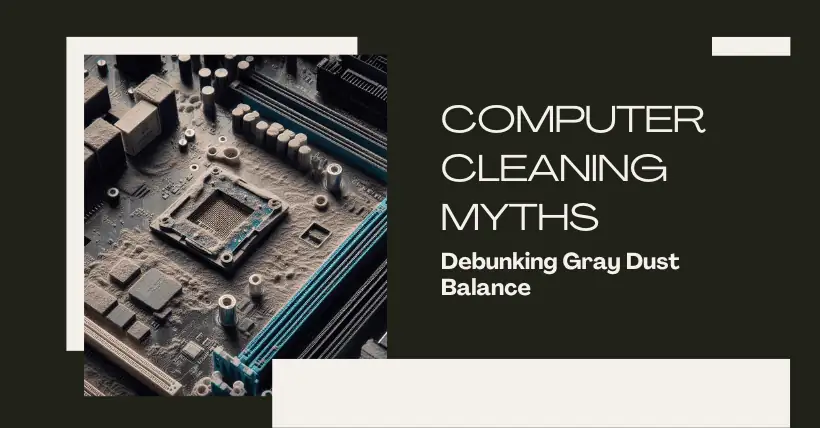1. Introduction to Gray Dust Balance
In the realm of computer hardware maintenance, the concept of “Gray Dust Balance” has emerged, bringing along both intrigue and confusion. This theory proposes that a certain level of dust accumulation within a computer system can offer protective effects on the hardware components. However, the reality is quite different from this purported theory.
2. Explaining Gray Dust Balance
The “Gray Dust Balance” theory suggests that the presence of dust within a computer can safeguard its internal hardware, preventing damage and potentially providing a protective layer. This misconception has led many to believe that leaving dust undisturbed within a system is beneficial. Contrary to this belief, accumulated dust can significantly impair the stable operation of a computer.
3. Effects of Accumulated Dust on Computers
The notion that dust acts as a protective layer is flawed. When dust accumulates within a computer, it interferes with the cooling system, thereby elevating temperatures and potentially leading to static electricity issues. Over time, this can drastically shorten the lifespan of the hardware components.
4. Importance of Cleaning Computer Dust
Understanding the implications of excessive dust accumulation is crucial. Regular cleaning is essential to maintain optimal hardware performance. The frequency of cleaning depends on the working environment, as different settings might lead to varying levels of dust accumulation.
5. Proper Techniques for Cleaning Computer Dust
Cleaning a computer demands precision and caution. Before initiating the cleaning process, it is imperative to take anti-static measures to prevent any damage to the electronic components. For desktops, preparing with anti-static gloves and cutting off the power supply is essential. Carefully removing hardware components and using an anti-static soft brush for gentle dust removal are crucial steps.
6. Common Mistakes in Computer Dusting
A significant portion of issues arising post-cleaning stem from incorrect dusting methods. Mishandling the hardware or using non-standard tools can lead to damaging electronic components. Additionally, utilizing high-power blowers directly on the computer or neglecting anti-static precautions can generate further problems.
7. Debunking the “Gray Dust Balance” Theory
The misconception around the theory of “Gray Dust Balance” is merely a result of misinterpretation and incorrect practices. It is vital to comprehend that the right cleaning procedures do not cause issues with the computer; instead, the problems arise from mishandling and incorrect operational methods.
8. Conclusion
In conclusion, the notion of “Gray Dust Balance” as a protective layer within a computer system is unfounded. Proper cleaning procedures, involving anti-static precautions and delicate handling, are essential for maintaining hardware integrity and performance.
9. FAQs
-
Is it true that dust can protect computer hardware?
No, accumulated dust within a computer can lead to overheating and hardware performance issues. It does not offer any protective benefits.
-
How frequently should I clean my computer?
The frequency of cleaning depends on the working environment. However, an annual cleaning, especially for laptops, is advisable.
-
Can cleaning the computer cause damage?
Cleaning itself doesn’t cause damage if done correctly. Damage arises from mishandling and improper cleaning techniques.
-
What precautions should I take before cleaning my desktop computer?
Ensure anti-static measures are in place, cut off the power supply, and handle hardware delicately.
-
Can I clean computer hardware with water?
No, cleaning computer hardware with water can lead to severe problems. Use anti-static soft brushes and avoid any contact with water.

Related:
- How to Transfer Data from Old Computer to New One Easily?
- Phone Germs: 10x More Than Toilet Seats!
- ARGB Coolers Explained: Functions, Benefits & Selection Tips



